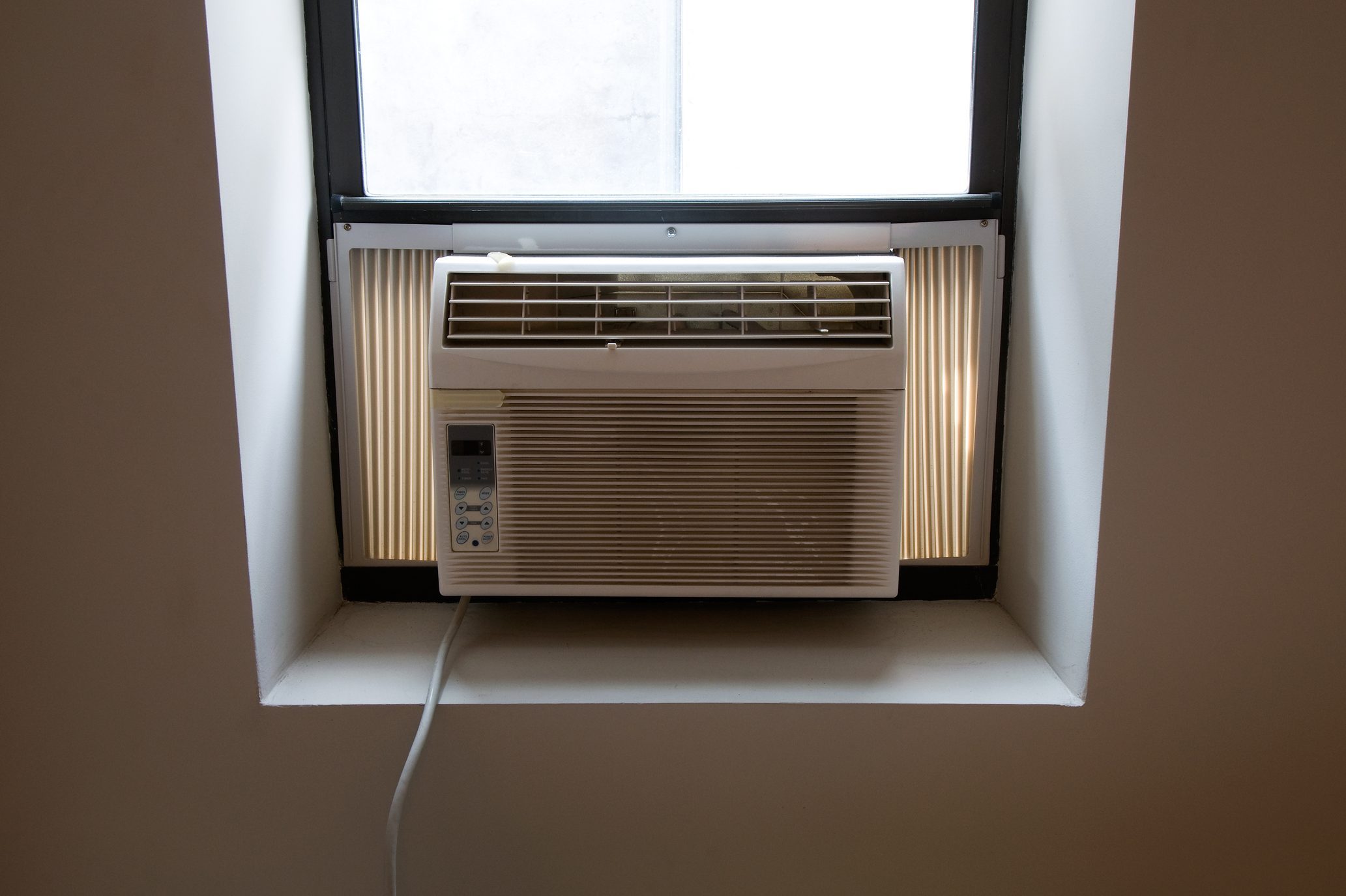Air conditioners generate water which should go outside. If it's dripping inside, it could ruin your walls and floor. Here's what to do.

Why Is My Air Conditioner Leaking Water and How to Fix It

On days when you run your car’s air conditioner, you may notice a common but unsettling sight when you pull away from your parking spot: A puddle on the pavement where your car used to be.
I tend to drive old cars, so the first time I saw the puddle, I assumed the worst — an oil leak and expensive repairs. When I checked, though, it was just water. Then I remembered the air conditioner. All ACs produce water, and your car’s just drips it onto the road.
Window air conditioners, however, feature drainage systems that direct the water outside. A faulty drainage system is usually the culprit when the unit leaks onto the windowsill or the floor.
Most of the time, you can fix drainage problems yourself. Dripping can also result from frozen evaporator coils — usually an easy fix. If you have an older unit, it may be running low on refrigerant, and recharging it might cost as much as a new air conditioner.
On This Page
What Causes an AC to Leak Water Inside?
An air conditioner circulates warm air past a set of evaporator coils, which cools it. Since cool air holds less moisture than warm air, the excess condenses and turns to water. It’s basically the same process that makes rain.
Some units direct the water through a tube to the outer part of the housing. In others, the blower slings the water against the compressor to cool it. In both cases, the water eventually drips into a pan at the bottom.
If water is dripping from an AC unit indoors, the reason may be one of the following:
- A blocked drainage tube: Dust from the air can mix with water and create an obstruction.
- A damaged drain pan or blocked water outlet: A damaged pan produces drips in all the wrong places, and a blocked water outlet causes an overflow.
- The drain pan tilts the wrong way: It needs to tilt toward the outside. Some window AC units give the pan this tilt when the unit is installed level. Units without this feature must be tilted during installation. If the unit wasn’t leveled properly, it’s probably been leaking since Day One.
- A dirty air filter: This prevents air from circulating freely around the evaporator coils, and the refrigerant can’t absorb the heat. That makes the coils ice over and drip water when the unit isn’t running.
- There’s a refrigerant leak: This can also cause the coils to ice over and drip when the unit is off. It requires professional repair.
What’s the First Thing To Do if an AC Is Leaking Water?
Turn the air conditioner off and wipe any water off the floor. Open the grille on the front and, if necessary, remove the air filter and look for ice on the evaporator coils.
If the coils are iced over, leave the unit off to melt the ice and put a bucket underneath to catch the water. If that’s not the issue, leave the air conditioner off while you troubleshoot. Better yet, unplug it.
How To Fix an AC Leaking Water Inside
Some window air conditioner fixes require access to the outdoor part of the unit. That can be challenging if it’s mounted in an upper-story window, or in a tall building. If you can’t reach it through the window, you might need to bring it inside. If you’re not up for that, call a pro.
Tools and materials
- Kitchen sponge;
- Screwdriver;
- Epoxy putty;
- Torpedo level;
- Shims.
Clean or replace the air filter
If you see ice, cleaning or replacing the air filter may solve the problem. Most filters are cleanable.
If so, run water through it from the faucet while you scrub out the dirt with a sponge. Let the filter dry while the ice on the coils melts, then put it back in and start the unit. If the coils ice over again, call a service tech to recharge the refrigerant.
Clear the drain hole
The drain pan for a window unit has a hole in one of the outside corners, which may be plugged. To access it, pull back or remove the skirting from one side of the unit and reach through the opening. Remove any loose debris and poke a screwdriver through the hole to open it up.
Patch or replace the drain pan
If you have an older AC and you see water dripping from any part of the drain pan, the pan’s probably rusted and you may have to replace it. If there’s just one hole and you can reach it, you can try to patch it with epoxy putty.
Clean the drain tube
The drain tube leading from the evaporator coils to the outside of the housing may be blocked. Check your owner’s manual to find where this is and clean it with a long, thin object like a sewing needle.
You may need to remove the outside housing cover to do this. If the air conditioner is mounted in a high window, open the window far enough to reach the cover or take the unit indoors.
Adjust the tilt
If a newly installed window air conditioner leaks onto the floor, it’s probably not tilted enough toward the outside.
Before you adjust it, check the manual to see if the pan is installed inside the unit at the proper angle. In that case, the air conditioner should be sitting dead-level in the window. Otherwise, it should tilt downward toward the outside.
Use a torpedo level to check it. If the AC needs to tilt outward, shim up the front with thin pieces of wood or plastic until a quarter of the bubble passes the centering line.




















